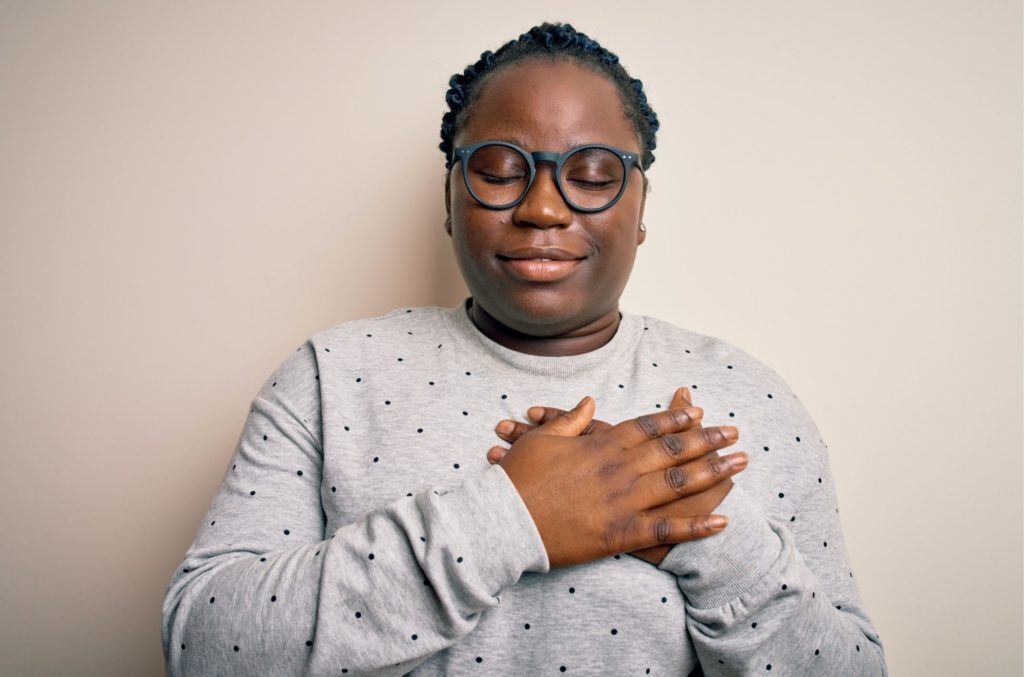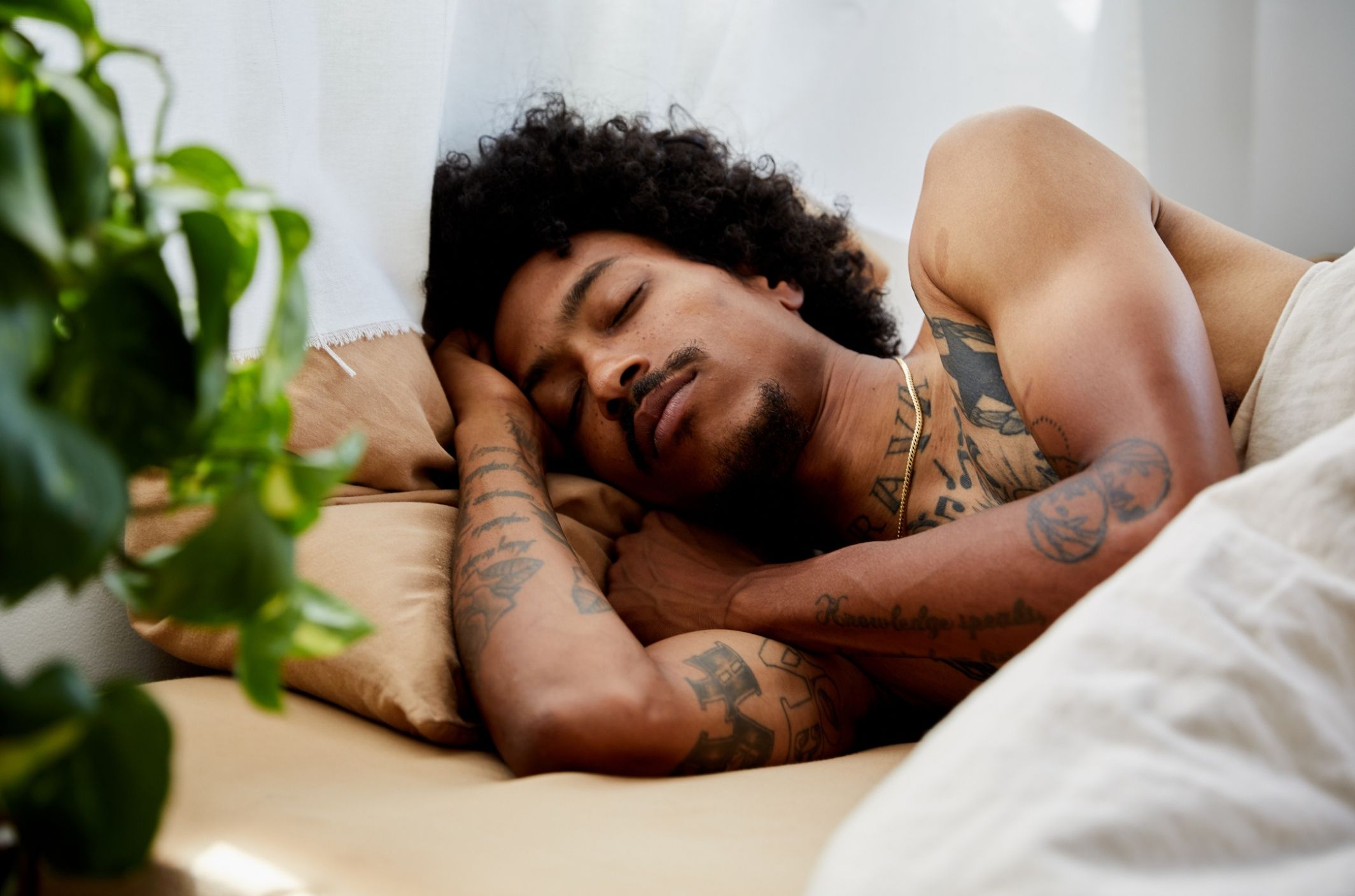Occasional anxiety is a normal part of life. Though it may sound strange, the experience of anxiety is part of the intelligent way that the human body and mind protect you from actual or perceived threats.
If you’re preparing for a big presentation at work or getting ready to do some public speaking, feelings of apprehension and worry may sometimes provide a boost of energy that can help you focus.
What is anxiety?
Anxiety is the most common mental health disorder. It’s often experienced as feelings of extreme uneasiness, nervousness, worry, or dread. These feelings may be associated with something specific, or they may arise without an apparent cause.
For people who experience anxiety disorders, this adaptive response has far surpassed its intended purpose. If you experience persistent and overwhelming feelings of uneasiness and worry that interfere with your life, you may have an anxiety disorder.
Statistics
Anxiety is the single most common mental health disorder in the US. Here’s what the ADAA’s 2020 statistics have to say.
- Anxiety disorders affect 40 million people, or 18.1% of the adult population, each year.
- Though this group of disorders responds well to treatment, 63.1% of people with them go untreated.
- Nearly half of the people diagnosed with depression are also diagnosed with an anxiety disorder.
- An estimated 31% of adults will experience an anxiety disorder at some point in time.
If you have anxiety or depression, we want you to know that you’re not alone. For the most part, anxiety disorders respond well to treatment, and help is available today.
Causes
What causes anxiety? The truth is, we’re not totally sure. Anxiety disorders are a complex response with many contributing factors.
Risk factors
Some factors put people at greater risk for developing this type of disorder. While we’re not entirely sure how we know that genetics play a part in your likelihood of developing clinical anxiety.
Brain chemistry and personality are also involved. Some people with anxiety are experiencing the results of a chemical imbalance in the brain. Certain people whose personalities tend toward stress or worry are also at higher risk.
Finally, drug and alcohol abuse increases your risk of mental health issues. Difficult or stressful life events and experiences also make it more likely that you’ll experience anxiety. This is especially true when you’ve experienced trauma.
To summarize, the following risk factors may contribute to anxiety:
- Other mental health disorders
- Family history of anxiety disorders or other mental illness
- Trauma, including racial trauma
- Persistent stress
- Personality
- Drug and alcohol abuse
Learn why sexual performance anxiety happens and how to treat it.
Anxiety and depression
It’s extremely common for people to experience anxiety and depression at the same time. In a review of the scientific literature, data show that for patients with major depression, approximately 50% also have an anxiety disorder.
In turn, an anxiety disorder is the single most significant risk factor for developing depression.
Depression is characterized by:
- Feelings of sadness, guilt, hopelessness, worthlessness, and self-blame
- Irritability, frustration, and anger
- Loss of interest in your favorite hobbies or activities
- Fuzzy thinking, marked by trouble with concentration, memory, and decision-making
- Decreased energy
- Anxiety and restlessness
- Changes in sleep
- Weight loss and lack of appetite
- Increased cravings and weight gain
- Physical pain without a physiological cause
- Suicidal thoughts
- Suicide attempts
Depression and anxiety often go hand-in-hand. If you’re experiencing depression or suicidal thoughts, don’t be afraid to ask for help.
In a psychiatric emergency, call 911 or go to the nearest emergency room. You can also call the National Suicide Prevention Hotline at 1-800-273-8255 or text “home” to 741-741.
Complications
Anxiety is problematic for the mind and the body. People who experience this type of disorder are prone to other issues and health conditions. These include:
Other mental health disorders
Many people who experience anxiety also have other mental health disorders, ranging from depression and other mood disorders to eating disorders and body-focused repetitive behaviors (BFRBs).
Drug and alcohol abuse
Researchers estimate that people experiencing anxiety are twice as likely to develop addictive disorders. In addition, drug and alcohol abuse can exacerbate and perpetuate anxiety disorders.
Sleep issues like insomnia
Insomnia has a direct correlation to anxiety. Studies have also found that teeth grinding (bruxism) and clenching at night are associated with self-reported anxiety.
Digestive issues
People with anxiety are prone to irritable bowel syndrome (IBS), indigestion, nausea, constipation, and diarrhea. An estimated 50 – 90% of people who seek treatment for IBS also have mental health challenges like anxiety.
Chronic pain
People with chronic pain are more likely to experience anxiety, including pain or illness-related anxiety. Though researchers once believed this connection to be psychological rather than biological, recent studies show that the neurological manifestation of pain has biological similarities to anxiety and depression.
Headaches
Migraines and headaches are common symptoms of anxiety disorders. Though we can’t be sure of the exact reason for this correlation, researchers believe it has to do with serotonin activity within the brain.
Social isolation
This has an especially big impact on people with social anxiety disorder. Studies show that chronic social isolation also puts people at greater risk for depression, poor sleep, cognitive decline, poor cardiovascular health, and a decline in immune responsiveness.
People with this type of disorder are also more likely to have suicidal thoughts and feelings. A 2010 study found that up to 70% of people with a history of attempted suicide also had an anxiety disorder.
Not everyone with an anxiety disorder will experience thoughts of suicide, but it’s important not to minimize the impact of anxiety.
Do weighted blankets really help with anxiety? Get the answers here.
Types of anxiety
There are different types of anxiety, but many people diagnosed with anxiety disorders experience more than one kind. These are the most common types of anxiety disorders.
Agoraphobia
People with agoraphobia have a fear of places or situations where there’s no easy way to escape. This may cause panic and the feeling of being trapped, defenseless, embarrassed, or afraid.
According to the National Institute of Mental Health (NIMH), around 1.3% of U.S. adults experience agoraphobia at some time in their lives. In many cases, it develops following the experience of one or more panic attacks.
If you have agoraphobia, you may avoid public places or large gatherings, and, in some cases, it can be so severe that you’re unable to leave home.
Symptoms of agoraphobia include:
- Fear of leaving home
- Avoidance of crowds or lines
- Claustrophobia
- Fear of open spaces
- Avoidance of public transportation
- Anxious feelings that are objectively out of proportion to the threat
Generalized anxiety disorder (GAD)
It’s normal to feel worried or stressed from time to time. But for people with generalized anxiety disorder (GAD), anxiety is experienced as excessive and consuming worry.
If you have GAD, you may feel an overwhelming worry about things that don’t objectively merit such a high level of concern. You may also expect the worst-case scenario or tend to catastrophize future events.
The focus of your anxiety might shift regularly. Even when there’s no apparent cause, you may become anxious about the safety of those you care about or your own wellbeing. People with GAD also complain of a feeling of dread, the impending sense that something terrible is just around the corner.
If you experience anxiety that is difficult to control and lasts for more than 6 months, you may have GAD. This disorder can impact your work life, your relationships, and even your health.
Symptoms of GAD include:
- Feeling restless
- Ongoing, intrusive worry that’s out of proportion
- Irritation
- Trouble staying focused
- Your mind going blank
- Catastrophizing
- Indecision
- Not being able to stop worrying
- Inability to relax due to worry
Social anxiety disorder (social phobia)
People who have social anxiety disorder, sometimes called social phobia, experience worry or fear in social situations. At its most basic, this is a fear of being watched or scrutinized by other people. For many, this makes it difficult to interact with others at work, school, or in public places.
Social phobia is also associated with performance anxiety, such as the fear of giving a public speech or a job interview. In some cases, a person with this disorder may worry for weeks about an upcoming social event or avoid such situations altogether.
If you experience significant worry about social interactions that makes it difficult to live your life and accomplish daily tasks, you may have this disorder. For a clinical diagnosis of social anxiety disorder, symptoms must persist for more than 6 months.
When left untreated, this disorder can last for many years and severely inhibit your ability to function and thrive.
Symptoms of social anxiety disorder include:
- Avoiding social situations
- Extreme fear when interacting with people, especially strangers
- Persistent anxiety when you think about an upcoming social event
- Fear that people will notice how uncomfortable you are, especially if you experience physical symptoms like blushing or sweating in social situations
- Analyzing social encounters after the fact with a focus on what went wrong
Obsessive-compulsive disorder (OCD)
OCD is a mental health disorder characterized by excessive thinking (obsession) and repetitive behavior (compulsion). The National Institute of Mental Health defines obsessions as “repeated thoughts, urges, or mental images that cause anxiety.”
People with obsessive-compulsive disorder perform certain behaviors repeatedly in an attempt to control or manage anxiety. If you have OCD, you may associate these obsessions with a fear of germs, unwanted thoughts perceived as wrong or bad, and aggressive thoughts directed at yourself and those around you.
But obsessive-compulsive disorder goes beyond extra hand washing or checking to make sure appliances are turned off. An invisible part of the disorder is the constant, ruminative thinking that occurs before acting out a compulsion.
The mental obsession can make it difficult or impossible to function, severely impacting your quality of life, as well as your ability to maintain relationships and jobs.
Symptoms of obsessive-compulsive disorder may involve these common obsessions or compulsions.
Obsessions:
- Contamination
- Physical order
- Violent thoughts
- Unwanted sexual thoughts
Compulsions:
- Washing
- Cleaning
- Checking
- Counting
- Ordering and arranging
- Hoarding
Post-traumatic stress disorder (PTSD)
PTSD is a prolonged trauma response that occurs as a result of seeing or experiencing a terrifying or devastating event.
In response to a stressor, your body triggers a chemical stress response, which has an immediate and discernable effect on your body. Your body does this so that it’s primed to escape the danger you’re experiencing or anticipating.
But sometimes, following severe trauma, your body gets stuck in a stress response. When this happens, the nervous system cannot return to balance even after the threat has passed.
Symptoms of PTSD include:
- Intrusive memories
- Flashbacks, re-experiencing the trauma as if it were happening again
- Nightmares
- Irritation and anger
- Physical pain, nausea, sweating, shaking, or trembling
- Hypervigilance
- Numbness and avoidance of feelings
Panic disorder
A panic attack is a sudden rush of fear that can cause chest pain, shortness of breath, and several other intense physical symptoms. Usually, an attack peaks quickly and only lasts for a few minutes.
While it’s normal to endure a panic attack during a stressful event, a person with panic disorder experiences repeated panic attacks, often without any warning signs. Although panic attacks can be terrifying, panic disorder is not life-threatening.
If you have this disorder, you may develop anxiety about when and where the next panic attack will occur. The fear of another incident can become overwhelming, disrupting your everyday routines.
No one knows precisely why panic attacks occur. But if you have panic disorder, your physiology may be overreacting to everyday sensations, treating them like major threats. Panic disorders can run in families, and the onset of symptoms typically occurs in late teens or early adulthood.
Symptoms of panic disorder include:
- Rapid heart rate or heart palpitations
- Flushing
- Sweating
- Feeling like you can’t breathe or breathing too much
- Feelings of dread or impending doom
- Shaking
- Loss of control
Phobias
Phobias refer to intense fears surrounding specific objects or situations, even if they pose no danger. You may feel irrational fears related to animals, the natural environment, injury, particular actions, like driving or flying, or any number of other triggers.
The NIMH reports that over 12.5% of U.S. adults experience a specific phobia at some point in their lives. Phobias can vary in intensity, and not all phobias require treatment.
For some people, phobic anxiety can interfere with everyday life. If you have a phobia, you may take extreme measures to avoid the object of your fear or experience physical anxiety symptoms when you confront or anticipate confronting it.
The onset of phobias is typically sudden, and they often arise during adolescence or early adulthood.
Symptoms of phobias include:
- Extreme fear
- Fast, pounding heartbeat
- Sweating
- Difficulty breathing
- Hyperventilation
- Trembling
- Dry mouth
- Nausea
- Digestive issues
Illness anxiety disorder
Illness anxiety disorder is the modern term used to describe excessive anxiety about your health. In the past, someone with illness anxiety disorder may have been diagnosed with hypochondriasis, also known as hypochondria.
While it’s normal to worry before a medical test or research your healthcare options, people who have illness anxiety disorder worry about having severe illnesses even when they don’t display the relevant symptoms.
For example, if you have illness anxiety disorder, you might continue to believe you have an illness even after a medical exam proves otherwise. This disorder can make minor symptoms seem like severe medical conditions.
Symptoms of illness anxiety disorder include:
- Excessive concern about your health
- Fear of getting a serious disease or health condition
- The belief that minor symptoms indicate a serious illness
- Preoccupation with a specific medical condition
- Repeatedly checking your body for signs of illness
- Frequent doctors appointments or avoidance of doctors altogether
- Avoiding people or places due to perceived health risks
- Bringing your health into every conversation
- Searching the internet for symptoms or illnesses
Separation anxiety disorder
Separation anxiety disorder describes intense and prolonged distress caused by distance from family members or loved ones. When a child over the age of 3 has separation anxiety that seems inappropriate to his or her age, it can interfere with daily life.
Adults with separation anxiety disorder may refuse to participate in normal activities, such as school and work. If you have this disorder, you may fear that loved ones will be injured or kidnapped in your absence, or you might experience physical pain as a symptom of anxiety.
This anxiety disorder mostly affects children, but it can impact teenagers and adults, as well. For adults, a diagnosis of adult separation anxiety disorder may be appropriate if symptoms persist for more than 6 months and interfere with daily activities.
Symptoms of separation anxiety disorder include:
- Fear of being away from home or loved ones
- Being afraid of losing a loved one to illness or a disaster
- Fear of being lost or kidnapped
- Nightmares about separation from family or loved ones
- Fear of being home alone
- Physical complaints, such as headaches and stomachaches, when anticipating separation
What does anxiety feel like?
Everyone gets anxious now and then, and it’s normal to worry about work, social situations, or your health. But an anxiety disorder feels different from everyday worry. It can be paralyzing, severely reducing your capacity to function.
When you have an anxiety disorder, your body is thrown into a fight or flight response easily and often. Even if your worries seem out of proportion, you may feel powerless to let them go. The experience of anxiety can snowball, growing from a typical concern to more extreme anxiety that persists for months or years at a time.
Physical and psychological symptoms may begin to get in the way of your work and social life. Your fears might even stop you from doing the things you used to enjoy. If you have anxiety that feels difficult to control, it may be time to consult a mental health professional.
Does marijuana help anxiety or make it worse? Learn more here.
Anxiety vs. panic attacks
Acute attacks of anxiety and panic attacks are experientially similar. While panic attacks are clinically accepted terminology, anxiety attacks are not. Beyond this, the significant difference in anxiety versus panic is the proximity of the threat or danger.
The Diagnostic and Statistical Manual of Mental Disorders (DSM-5), a guidebook for mental healthcare professionals, offers a specific clinical definition of a panic attack.
In order to meet the medical criteria for an attack, the episode must reach its peak within 10 minutes and display 4 or more of the following symptoms:
- Palpitations, pounding heart, or accelerated heart rate
- Perspiration
- Trembling or shaking
- Feeling short of breath or sensations of smothering
- Choking sensations
- Chest pain or discomfort
- Nausea or abdominal distress
- Feeling dizzy, unsteady, light-headed, or faint
- Feeling chilled or hot
- Sensations of numbness or tingling
- Feeling like things aren’t real, or like you’re detached from yourself
- Being afraid of losing control or “going crazy”
- Fear of death
You’re unlikely to have an anxiety attack without emotional triggers. In contrast, you can experience the sudden onset of a panic attack from a calm state. People having a panic attack sometimes think they’re having a heart attack because both can happen without warning, and chest pain is a shared symptom.
Discover how to stop a panic attack with tools that work anytime, anywhere.
Testing & diagnosis
To diagnose a patient with an anxiety disorder, a healthcare professional may perform tests. Some medications are known to cause anxiety. It’s important to rule out the possibility of side effects from any prescription drugs you’re taking.
After eliminating other potential causes, your mental health professional will perform an evaluation. As part of your assessment, you’ll be asked questions about your symptoms and your family history.
You may be asked to fill out a questionnaire like the GAD-7 or Beck Anxiety Inventory (BAI) to track and diagnose an anxiety disorder’s symptoms and severity.
Treatments
Once you’ve been diagnosed with an anxiety disorder, your healthcare professional can help you develop a customized treatment plan. Tools like anti-anxiety medications, talk therapy, and behavioral strategies can help you manage your symptoms.
Rx drugs
Benzodiazepines
These are the most commonly prescribed anti-anxiety medications. They work well to reduce the symptoms of acute anxiety, but you can develop a tolerance to them over time. By themselves, they don’t address the underlying issue.
Buspirone
This is a non-benzodiazepine medication often prescribed for the treatment of chronic anxiety.
Beta-blockers
These medications are customarily prescribed to treat high blood pressure but can also help with anxiety’s acute physical symptoms. They may help reduce unwanted physiological responses, like blushing, heart palpitations, and trembling. However, these are typically used to treat performance anxiety and not the other disorders listed above.
Antidepressants
Antidepressant medications, including serotonin reuptake inhibitors (SSRIs), don’t just treat depression. They can also treat the symptoms of anxiety. Since SSRIs are safe for long-term use and aren’t habit-forming, they offer an effective way to manage chronic anxiety. Brand-name options include Prozac, Lexapro, Zoloft, Celexa, and Paxil.
If you’re interested in taking medication to ease the symptoms, telehealth services make it easy to talk to a doctor. Visit Lemonaid to get an evaluation for anxiety treatment and an online prescription today.
Therapy
For people living with anxiety disorders, psychotherapy can offer some much-needed support. Using therapy, you can treat the underlying causes of anxiety, in addition to learning tools to manage the symptoms.
Cognitive behavioral therapy (CBT) is the most popular treatment for anxiety. CBT tools can break the cycle of anxious thinking by giving you new ways of thinking, behaving, and reacting to emotional triggers. CBT tools can be especially helpful for interrupting negative thought cycles, including negative self-talk and rumination.
Within CBT’s framework, a therapist will help you identify negative thought patterns and replace them with healthier ways of thinking.
Exposure therapy provides another model for treating anxiety disorders. Through repeated exposure to unpleasant situations, you may begin to experience less stress to triggers than you did previously.
Although this therapy may sound scary, it works thanks to slow, incremental changes. Through a process called systematic desensitization, you’ll build on small achievements over time.
Some find relief through therapy alone. Others find they need a combination of counseling and prescription medication.
Prevention
You can do a lot to reduce the anxiety in your life. Some of the simplest ways to live with less stress are also good for your overall health. Try these behaviors to lower your stress levels.
Exercise
An active lifestyle causes you to release endorphins, reducing stress.
Meditate
Adopt a mindfulness practice. It’s a great way to slow your reactivity and disrupt negative thought patterns.
Try these mindful breathing exercises for an introduction.
Connect with others
Social isolation can contribute to feelings of anxiety. Try to build community and participate in activities you enjoy.
Discover tools to help care for your mental health during COVID.
Reduce stress
Don’t overcommit. Look for ways to eliminate feelings of pressure and obligation and get comfortable saying no.
Get more sleep
Sleep deprivation can worsen anxiety, impair memory, and impact your ability to concentrate. Make sure to get at least 7 hours a night.
Eat a healthy diet
A low-sugar diet—high in complex carbs, lean proteins, fruits, and vegetables—can help reduce mood swings.
Avoid drugs and alcohol
Coping with symptoms can be challenging, but substances like these can hurt more than they help.
Eliminate caffeine and nicotine
Stimulants worsen the physical symptoms of anxiety, so cutting them out of your diet can make you feel better fast.
Outlook
The majority of people with anxiety disorders go untreated. Sometimes, as circumstances change, these issues resolve on their own.
But if you’ve been dealing with symptoms for more than 6 months or experience extreme anxiety, you may want to consider a mental health consultation. Treatment can significantly improve your quality of life.
Getting medical advice as soon as possible may be the best way to limit the impact of an anxiety disorder. If you’re diagnosed with this type of disorder, you may be prescribed medication or therapy that can help you start feeling better right away.
Takeaway
- Anxiety is the most common mental health disorder in the US.
- It’s common for this mental health condition to co-occur with depression or substance abuse.
- Many people with anxiety disorders experience more than one kind.
- You can manage symptoms with prescription medication, therapy, and behavioral changes.
Learn more about anxiety
Depression and anxiety often go hand-in-hand. If you’re experiencing depression or suicidal thoughts, don’t be afraid to ask for help.
In a psychiatric emergency, call 911 or go to the nearest emergency room. You can also call the National Suicide Prevention Hotline at 1-800-273-8255 or text “home” to 741-741.








